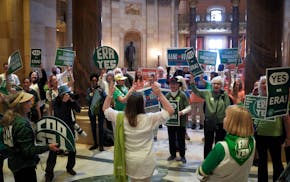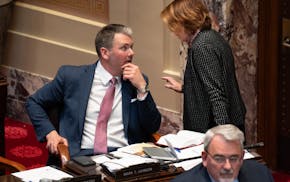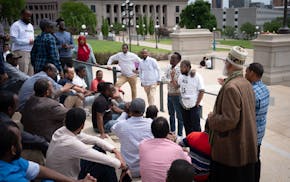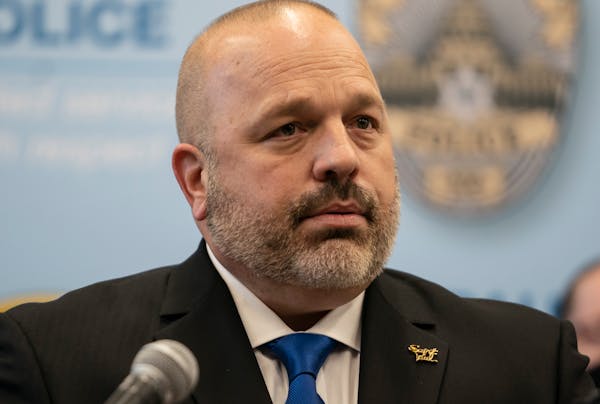St. Paul Mayor Melvin Carter on Thursday announced that he will hire 80 new police officers in 2022, months after Chief Todd Axtell urged city leaders to bolster staffing in a department he's described as increasingly stretched thin.
Thirty of those positions will be partly funded for three years by a $3.75 million grant from the U.S. Department of Justice. The city will use its federal pandemic aid from the American Rescue Plan Act to cover most of the rest of those officers' salaries and benefits.
Funding for the other 50 recruits will come mostly from the city's general fund as other officers retire or leave the force, Finance Director John McCarthy said.
"We are pleased to accept this grant to support our neighborhood safety efforts," Carter said in a statement. "This grant, our ongoing Community-First Public Safety efforts, and the establishment of our new Office of Neighborhood Safety are big steps toward improving public safety outcomes in our city."
The mayor, who began a second four-year term in January, has faced simultaneous calls to rein in violent crime and take an alternative approach to public safety in the wake of George Floyd's murder.
In addition to the new Office of Neighborhood Safety, which will lead a number of new and existing violence prevention initiatives, Carter's administration has launched a homelessness response team and a program that will pair social advocates with 911 responders. The goal of these efforts, the mayor has said, is to address the root causes of crime.
Officer shortage impact
Axtell, who plans to step down from his role as chief in June, has repeatedly sparred with the mayor over the department's funding and staffing. The force is struggling to keep up with the surge in crime that St. Paul and cities across the country have faced since the start of the COVID-19 pandemic, he has said, which has led to officers working more overtime shifts, cuts to community engagement and traffic enforcement, and scaled-back training.
The size of the department also dwindled during the pandemic, when Carter instituted a citywide hiring freeze.
The St. Paul Police Department has 535 full-fledged officers and an additional 53 who recently graduated from the city's police academy and will be fully trained by midsummer. The department's sworn strength is 619.
In a statement Thursday, the chief said he felt "relieved" to hear that Carter accepted the COPS Hiring Program grant, a flagship of the Justice Department's Office of Community Oriented Policing Services. Though the award was announced in November, the mayor said he needed time to learn more about the program's details and consider long-term financial implications for the city.
"Officers are the lifeblood of the [St. Paul Police Department], and they've been doing more and more with less and fewer for too long. And they are tired," Axtell said. "Knowing that help is on the way — that we could be at authorized strength some time in the next year and a half — is a step in the right direction."
Police staffing stability
Carter plans to launch one academy for 40 officers in August and another for 40 officers in December, according to a prepared statement from the city.
"The City Council has been supportive of stabilizing our police staffing levels by offering two academies a year," Council President Amy Brendmoen said in a statement. "It looks like COPS grant will make it much easier for us to reach this goal."
McCarthy said the federal money gives St. Paul "a lot of flexibility to try new staffing models" that aim to keep the city's force consistently closer to its sworn strength by hiring and training officers more frequently.
"This will go a long way toward keeping our community safe and supporting victims," said Council Member Jane Prince, adding that she urges the mayor to negotiate a new contract with the St. Paul Police Federation. The union filed for arbitration last month.
Around that time, Axtell wrote a letter to Carter saying the city is losing officers to other local law enforcement agencies that are boosting pay to attract candidates in the increasingly competitive labor pool.

Memorial Day weekend travel could come within striking distance of record

Equal rights, abortion protections move closer to landing on the 2026 ballot

Minnesota Legislature's 2024 session ends in anger and acrimony

Minnesota Legislature approves minimum pay for Uber and Lyft drivers

